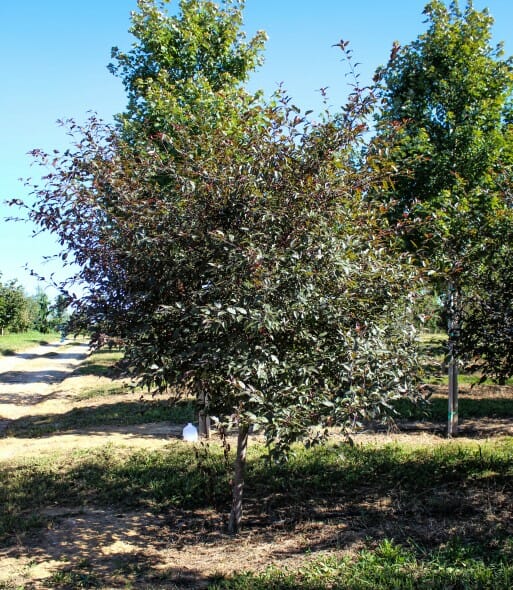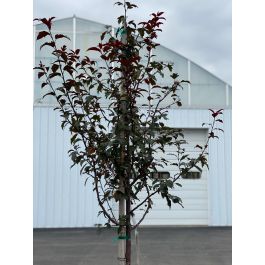

New leaves are wine red in color and mature to green with burgundy overtones and eventually turn orange-red in fall.Įspalier, Mass Planting, Specimen, Windbreak, Wildlife Garden, Urban GardenĪsexual reproduction of plants protected by the Plant Patent Act is prohibited during the life of the patent.ĭramatic Foliage Color, Easy Care, Edible, Extreme Cold Hardiness, Fall Color, Showy Fruit, Bird Friendly, Compact Form That said, you can make some great recipes with this fruit from the Royal Raindrops Crabapple Tree. The Crabapples themselves are small and taste of apple but with a sourer apple flavor.
#Crabapple royal raindrops series#
As Embo stated, fireblight would be one reason not to use the Raindrops series and you would be best off talking to a local extension agent about it. Flowers, while nice, are fleeting so it will depend on your overall purpose. The tree has beautiful, cut-leaf foliage. However, enjoying eating a crabapple or two is as safe as drinking a cup of coffee. For us Royal Raindrops always maintains better foliage color although in extreme heat it can lighten a bit. Red-purple fruit appear in mid-July and remain firm until early October. One of the best new cultivars, 'Royal Raindrops' is a broadly rounded tree with vibrant and abundant burgundy-red spring flowers. See store for details on specific container size availability.While all crabapples are technically edible, the fruit of most ornamental crabapples is not palatable without first cooking and sweetening the fruit. * Not all container sizes may be available at this time. This particular variety is an interspecific hybrid. It is highly tolerant of urban pollution and will even thrive in inner city environments. It is not particular as to soil type or pH. It prefers to grow in average to moist conditions, and shouldn't be allowed to dry out.

#Crabapple royal raindrops full#
This tree should only be grown in full sunlight. It grows at a medium rate, and under ideal conditions can be expected to live for 50 years or more. ‘jfs-kw5’, commonly sold under the trade name of royal raindrops, is an upright-spreading, disease-resistant, easy-to-grow, crabapple tree that features (1) deeply lobed purple foliage (early leaves may be entire) which retains excellent color throughout summer, (2) magenta-pink single flowers in spring (april in st. It has a low canopy with a typical clearance of 3 feet from the ground, and is suitable for planting under power lines. Royal Raindrops Flowering Crab will grow to be about 20 feet tall at maturity, with a spread of 15 feet. Royal Raindrops Flowering Crab is recommended for the following landscape applications It has no significant negative characteristics. It is a good choice for attracting birds to your yard. This tree will require occasional maintenance and upkeep, and is best pruned in late winter once the threat of extreme cold has passed. Its relatively fine texture sets it apart from other landscape plants with less refined foliage. Royal Raindrops Flowering Crab is a deciduous tree with an upright spreading habit of growth. The rough brown bark is not particularly outstanding. Prune Royal Raindrops flowering crabapple after flowering in spring if needed to remove dead or damaged wood or branches that rub or. Keep lawn grass away from the base of the tree the grass will compete with the tree for water and nutrients. The fruits are showy red pomes carried in abundance from early to late fall. Spread a 2-inch (5 cm.) layer of mulch around the tree to keep the soil moist and reduce evaporation. Wildlife enjoys the bright red berries which also add winter interest. The deeply cut lobed leaves are ornamentally significant and turn an outstanding scarlet in the fall. Turns brilliant shades of bronze, orange and purple in the fall.

It has attractive deep purple foliage throughout the season.

Royal Raindrops Flowering Crab is covered in stunning clusters of fragrant rose flowers along the branches in mid spring before the leaves.


 0 kommentar(er)
0 kommentar(er)
